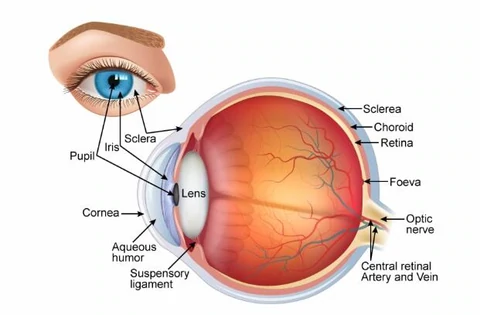NASA HAS BEEN STUDYING THE EFFECTS OF ZERO GRAVITY ON THE HUMAN EYE, AND IT’S FASCINATING
The human eye is a delicate mechanism. Its ability to function properly is influenced by moisture levels, blood pressure, light exposure, lens curvature, and a myriad of other factors. NASA scientists have added another one of those factors to the list – gravity. As it turns out, the human eye is dependent on Earth’s precise gravitational pull to function properly and maintain long term health.

NASA’s interest in the effects of zero gravity on vision is not new, as it’s been the focus of a number of studies conducted on board the International Space Station over the past few years. As Universe Today reports, “About 30% of astronauts on short-term space shuttle flights (roughly two weeks) and 60% on long-duration missions to the ISS have reported some impairment to their vision.” Some astronauts recover fully from these impairments, while others do not. So naturally, NASA began looking into how and why the eye is affected by zero gravity and what can be done to mitigate risk of visual impairment.
In 2018, scientists studied two groups of mice aboard the International Space Station. The first group experienced microgravtiy conditions like astronauts do while orbiting Earth, and the second group was kept in a centrifugal habitat unit that produced 1g of artificial gravity (which is equivalent to that of Earth’s).
The findings? The mice that experienced microgravity suffered vision impairments as a result of damaged blood vessels and ocular tissue, while the mice that experienced artificial gravity – you guessed it – were in much better health.
“When we’re on Earth, gravity pulls fluid down toward our feet,” explains researcher Michael Delp. “When you lose gravity, the fluid shifts toward the head. This fluid shift affects the vascular system throughout the body, and now we know it also affects the blood vessels in the eye.”

A conclusion that scientists drew from this and other experiments is that the introduction of artificial gravity would not only be beneficial to astronauts conducting short-term missions today, but would be necessary for long-term missions in the future as we continue to explore our vast solar system.
In addition, these studies will likely be beneficial to us Earth-bound humans as NASA continues to dive into the intricacies of the human eye and how it is affected by environmental factors.
As Delps adds, “We hope our findings not only characterize the impact of spaceflight environment on eyes but will contribute to new cures or treatments for spaceflight-induced vision problems as well as more Earthbound disorders, such as age-related macular degeneration and retinopathy.”

JIM HALO has also been committed to the protection of human eye health and vision, Including the development of prescription glasses and anti-blue light glasses, etc.

